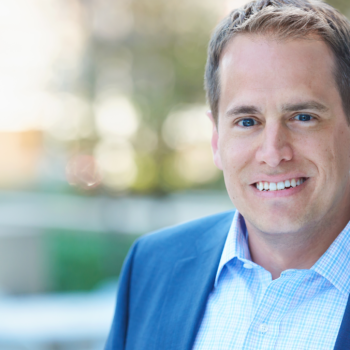People are inclined to want the best. The best schools for their kids, the best home for their money, the best dish on the menu, and so on. This quest for the best also extends to the investment realm. People want to invest in the best opportunities to grow their money and achieve their wealth goals. Often times, we’re asked to find the best stock, investment manager, deal or “sure thing.” Our job as advisors can be tough because predicting the future is a lot harder than planning for it.
Over the last several decades, there have been several successful investors (i.e. “the best”) that have embodied an almost unnatural skill (or element of luck) for finding great stocks, companies or strategies. Warren Buffet is a prime example in the investment world as he’s been able to grow his Berkshire Hathaway from a modest textile company to a multi-hundred billion dollar conglomerate – all on the backs of savvy and disciplined stock picking and business acquisition.
Trying to emulate Mr. Buffett and turn into the next billionaire is a lofty expectation and unrealistic – primarily because Mr. Buffett was given certain opportunities and had a specific vision that was unique to him. And that uniqueness brings up a point about maybe needing to reframe the question of finding the best. It may not be in one’s best interest to “find the best,” but rather to “find the best strategy.”
Below we review three common but counterproductive ways investors try to achieve “the best.”
Past Performance Predicts Future Performance
Conventional thinking – the best managers are those that performed well in the past vs. others. How would one find the best investment manager? We certainly can look for qualitative features like management tenure, pedigree and process consistency. But what tends to accrue the most weight on our decisions is past performance – i.e. what the manager has done in the past vs. others. These strategies become popular and surely, picking a top performer will result in future top performance.
Reality – Persistence in manager outperformance isn’t robust. The below charts show an example taken from mutual fund managers that are grouped together due to similar investment mandates. The top chart shows performance rankings of 254 mutual funds from best to worst over a 5-year period. The best fund, as measured by outperformance from the median, is listed at the beginning, and the worst fund is on the end. The bottom chart then takes that order of fund managers and looks at their performance over the subsequent 5-year period. What’s clear is that there is no persistence in the out/under performance for these managers. If you had picked a manager based on their performance over the last 5 years hoping to see that continue, you would’ve been disappointed.

What’s the best strategy? Patience and persistence – the managers that have delivered the top returns over long periods of time all have years of underperformance. If the people, process and philosophy all persist, your best bet is to stick with them.
High Fees Lead To Higher Returns
Conventional thinking – the best managers charge the higher fees. You get what you pay for. There is an unbelievable ocean of talent that has descended into the investment and financial industries over the last several decades. These CFAs, MBAs, PhDs, Ivy-educated humans have driven innovation throughout the investment product set and created a swath of strategies to seek attractive returns. As in most consumer product categories, the higher price is implied to mean higher quality. If an investor wants the best returns, they need to pay up for them.
Reality – Fees are not a predictor of performance. In fact, in the mutual fund universe, where the bulk of investor assets are held, you inversely pay for performance.

According to Morningstar, the expense ratio is the most proven predictor of future fund returns. In a recent research piece, they asked the question, “What percentage of funds survived and outperformed their category group?”
The findings from the research yielded the following observations:
• After testing over many years and many fund types, expense ratios consistently show predictive power.
• Using expense ratios to choose funds helped in every asset class and in every quintile from 2010-2015.
Interpreting the chart above: In U.S. equity funds (far left of chart), the cheapest fee quintile had a total return success rate of 62% compared with 48% for the second-cheapest quintile, then 39% for the middle quintile and so on.
What’s the best strategy? Be mindful of fee profiles. The traditional stock and bond fund universe is filled with expensive products, but drifting towards the lower fee profiles will increase your odds of outperformance. Why? All else equal, paying less means more is in your pocket/higher net returns.
Timing Is Everything
Conventional thinking – it’s all about timing it right. Getting the best returns is all about timing. Selling ahead of the tech bubble burst in 2000, selling out of real estate in 2006, buying stocks at the equity bottom in March 2009, avoiding the European debt crisis in 2011, etc. – these are what make one rich. Great investors are those who are able to get that “perfect call” right on something.
Reality – Evidence shows that timing efforts don’t work. Timing various market events perfectly (or even near perfectly) requires an ability to see the future, and more importantly, buck the prevailing consensus and sentiment (something that humans aren’t inclined to do). It can be more enriching to simply remain invested in the markets. Hindsight can be a destructive tool for your wealth. Looking back, it makes sense that the financial crisis hit in 2007 and the market turned for a bull run in 2009. These reflections tend to instil undue confidence in one’s ability to predict those next events (e.g. “valuations are high right now just like in 2007, I think I will sell out of stocks”).
The below chart shows the returns of each asset class for the last 20 years, along with the returns of the average investor. This study was done by Dalbar and takes into account when money went into each asset class to determine what the actual average investor earned vs. what the actual asset class earned over the same period. The message here is that investors aren’t the best timers. They tend to allocate money to asset classes that have done well and sell out of those that have done poorly.

What’s the best strategy? Take the tactical decision making out of your hands. Let a disciplined and systematic rebalancing plan make the timing decisions on your portfolio – it’s designed to sell relative outperformers and buy underperformers. If you have a long time frame, stay invested. Markets will turn without warning, and catching these inflection points is near impossible.
In summary, finding the best investments will not make you as successful as executing the best investment strategy. Exhibiting patience with mangers, keeping the fees low and avoiding the temptation to market time have proven to be consistently successful components of wealth creation.


